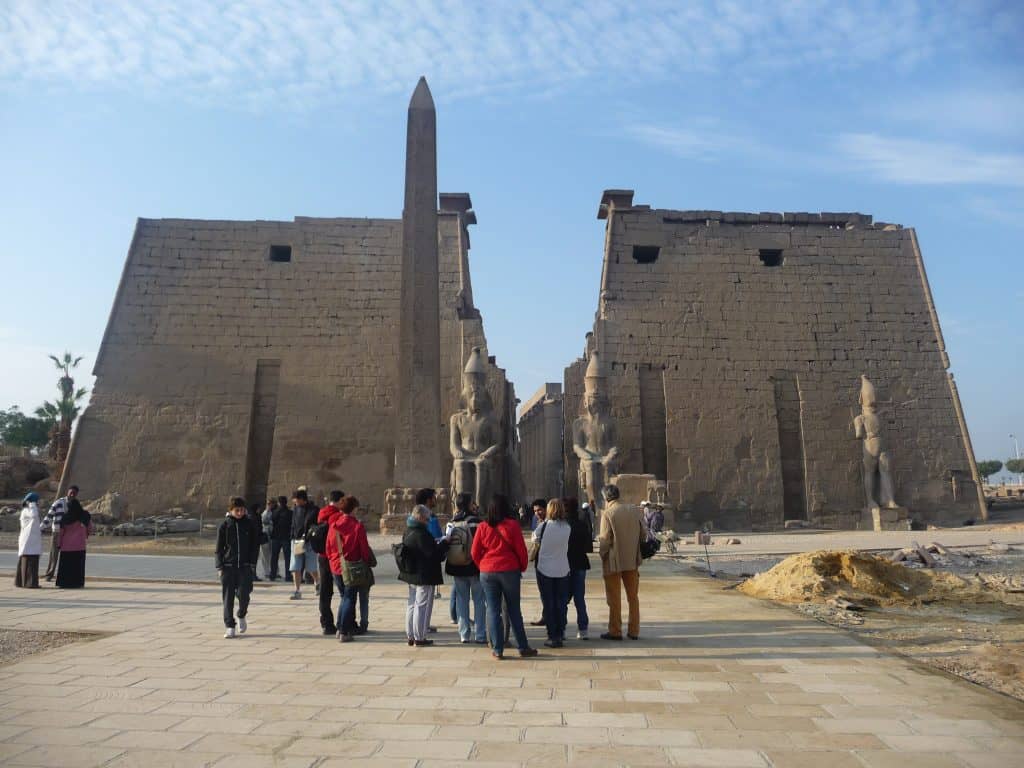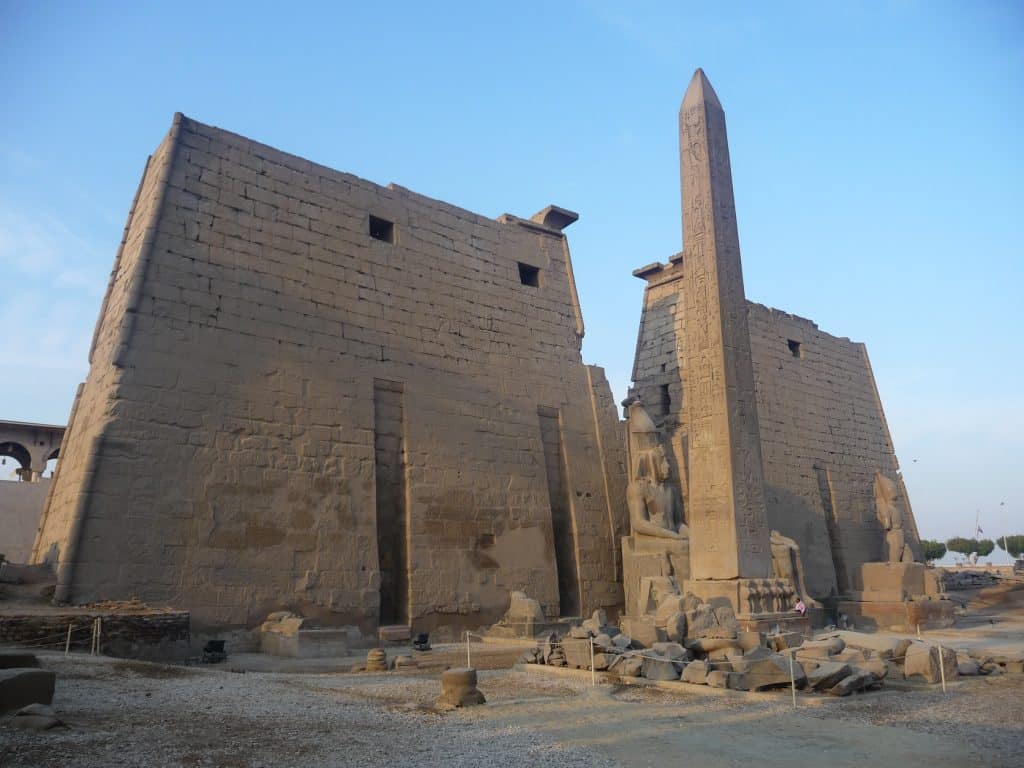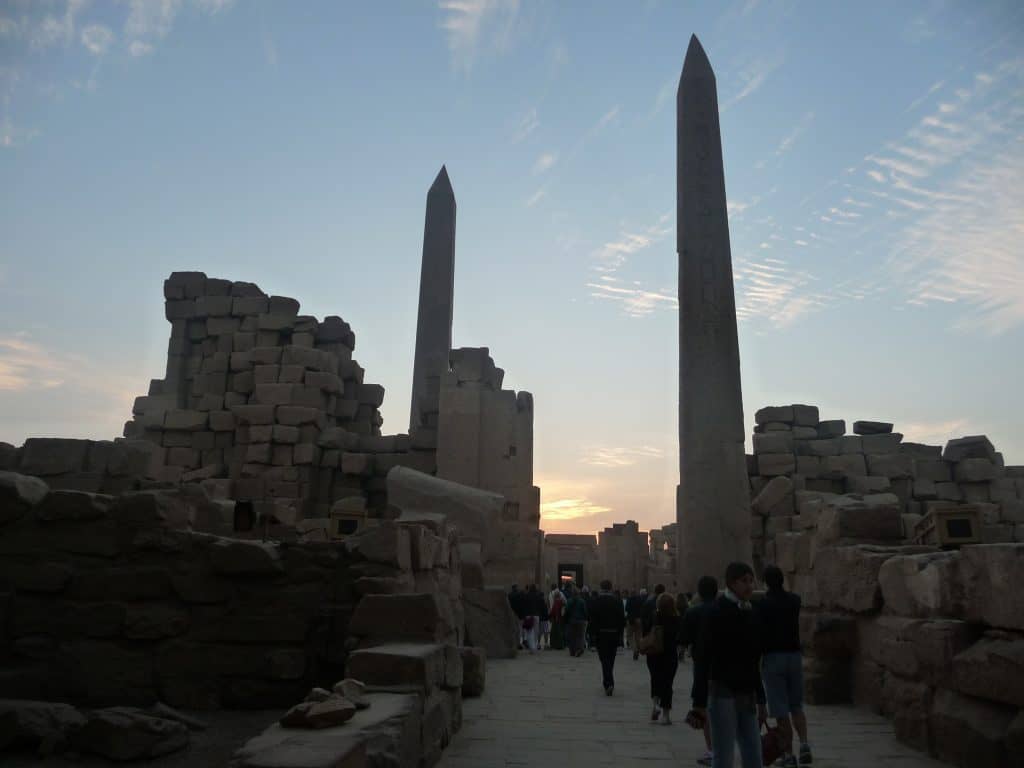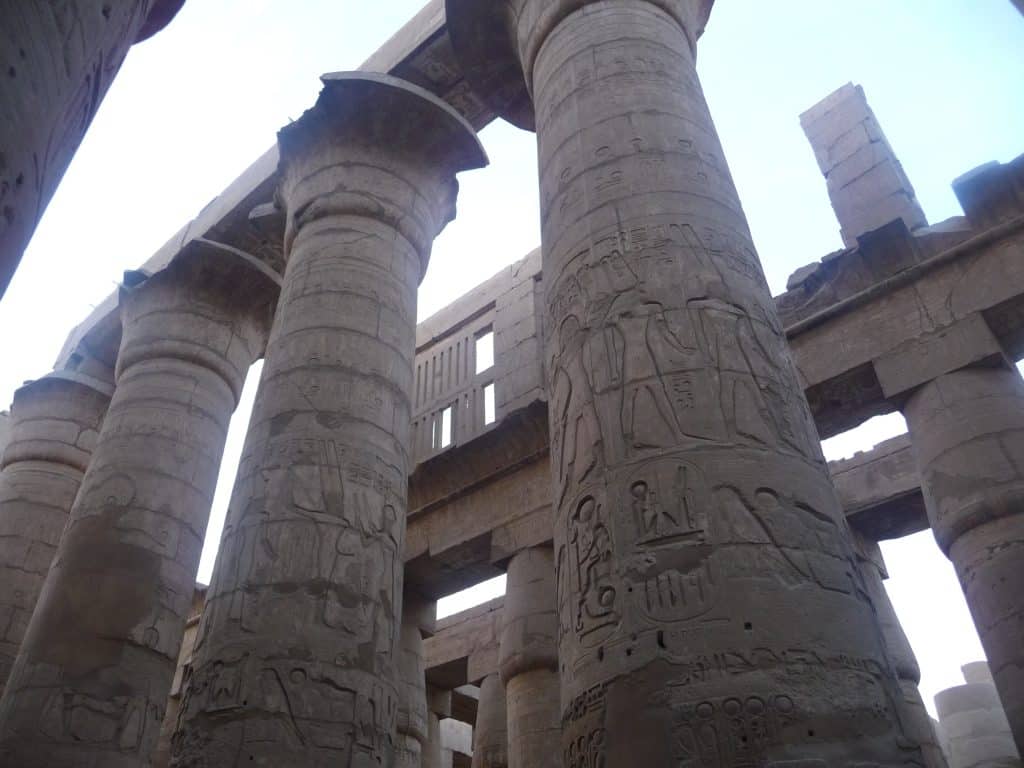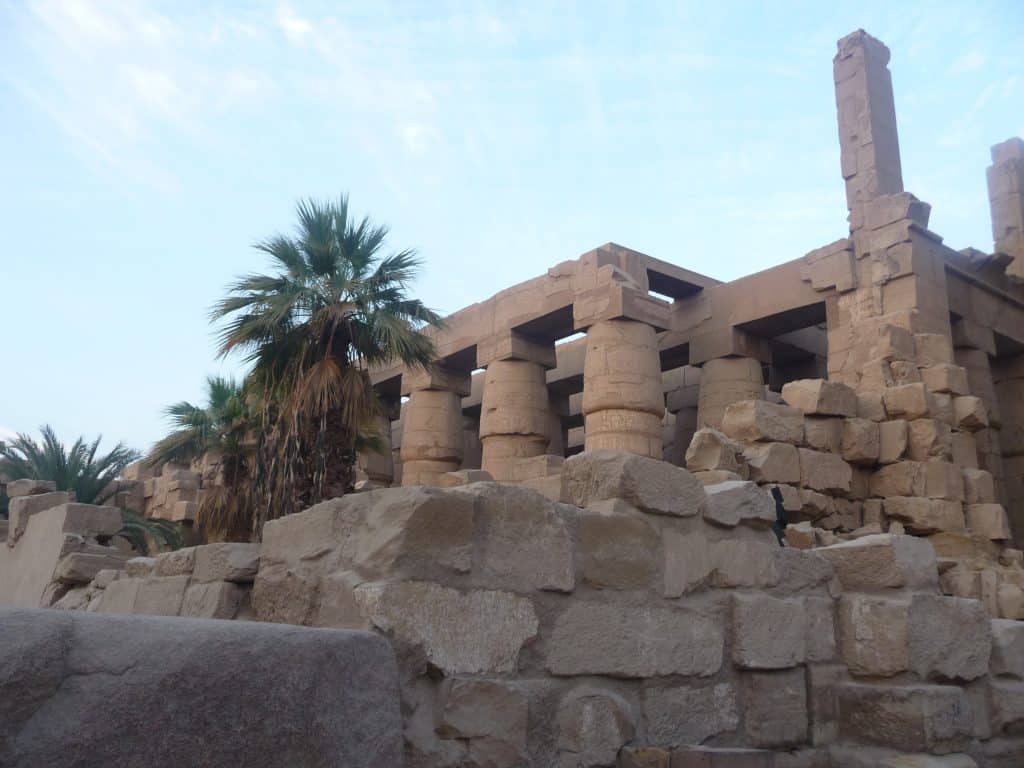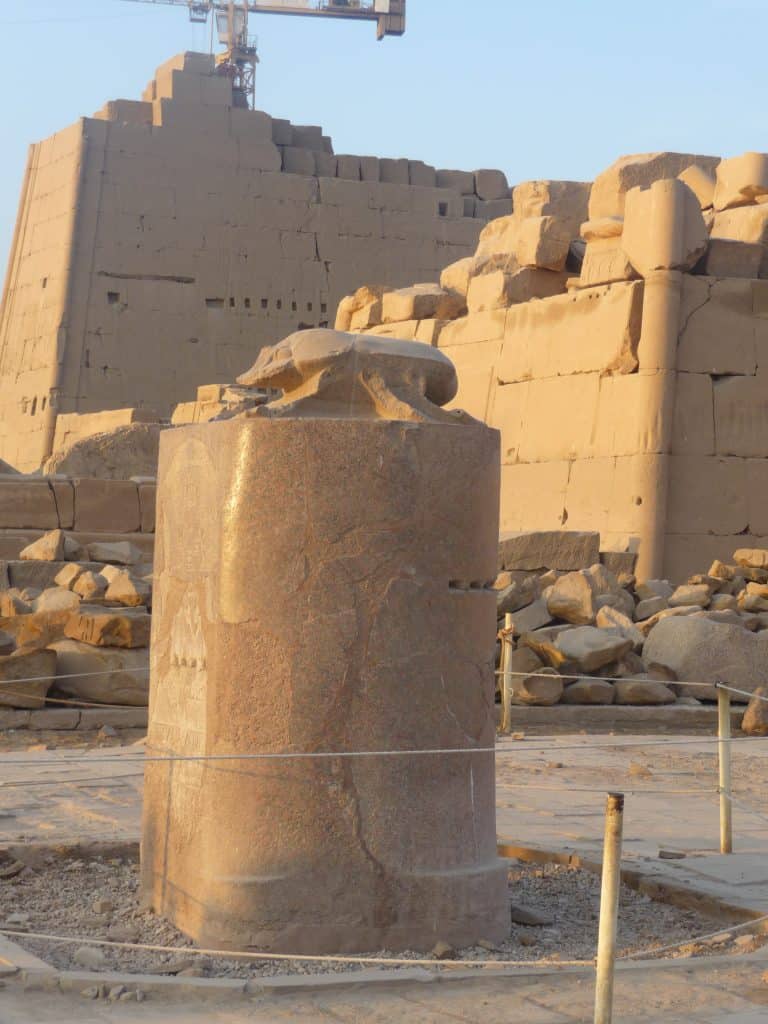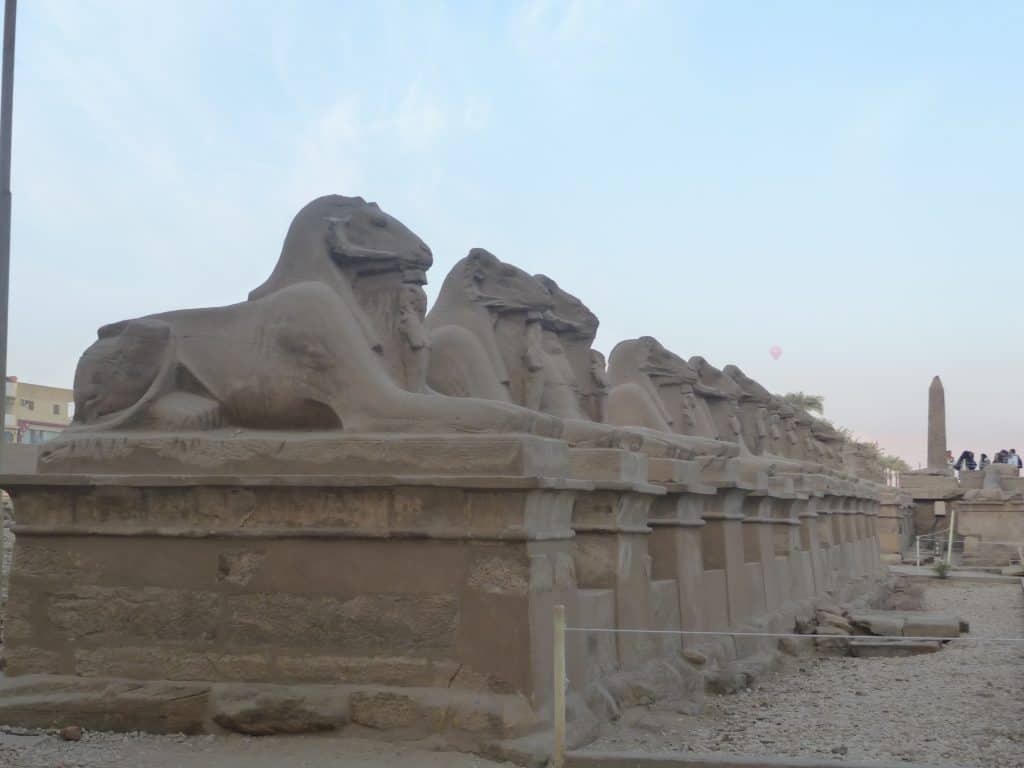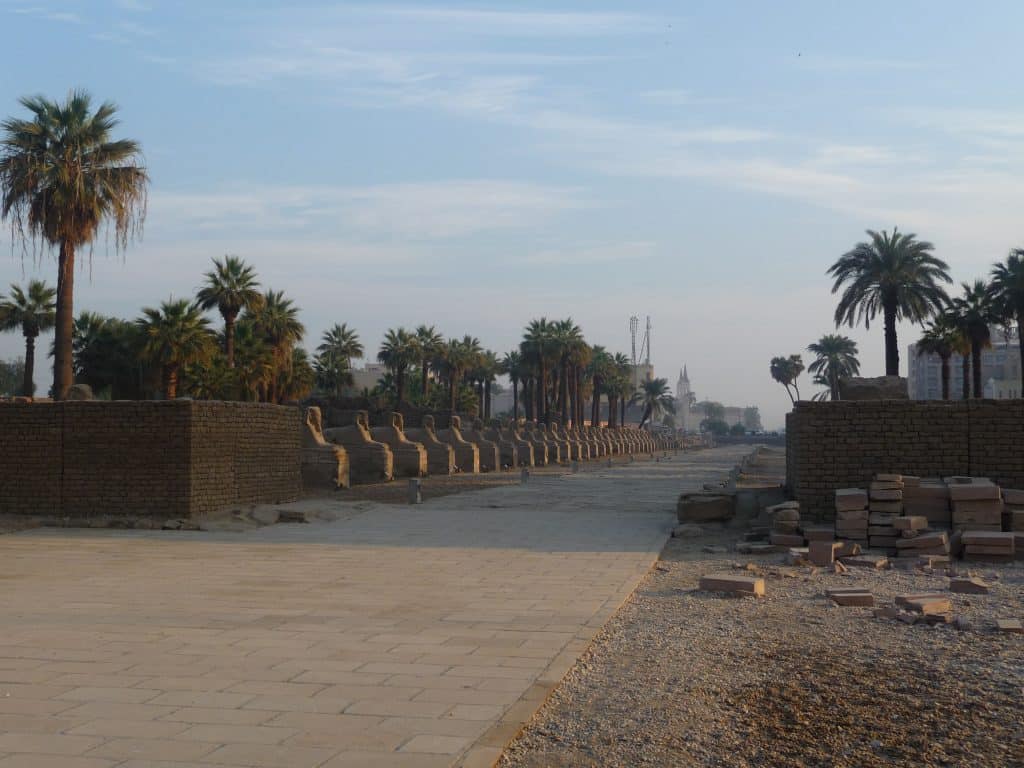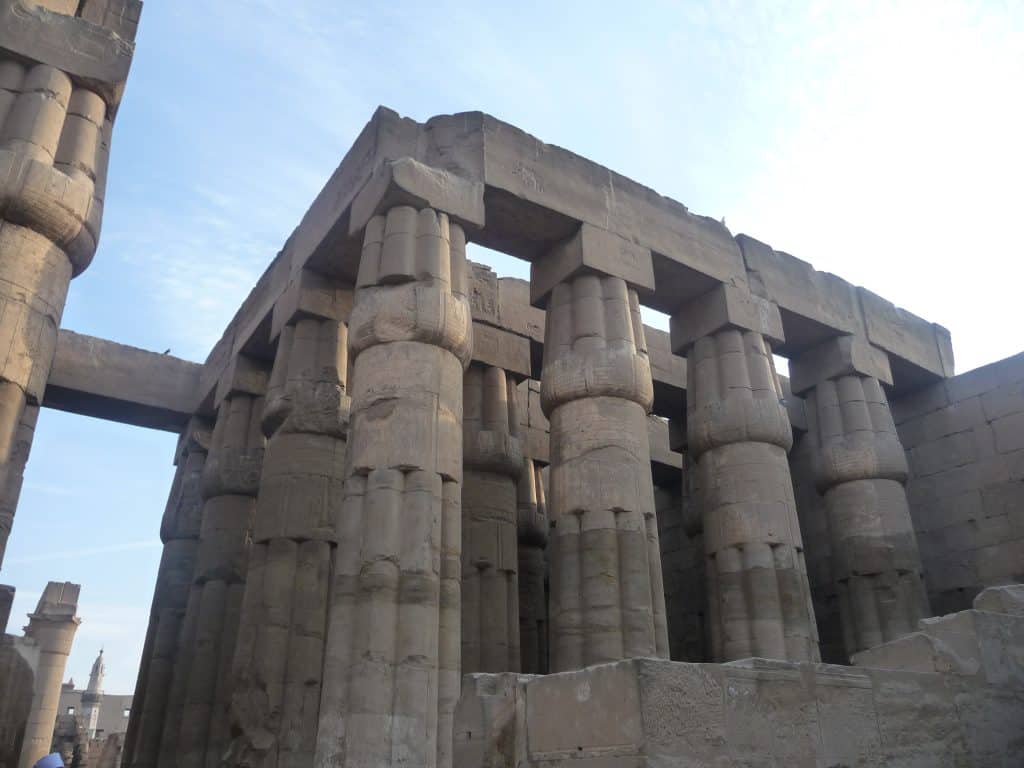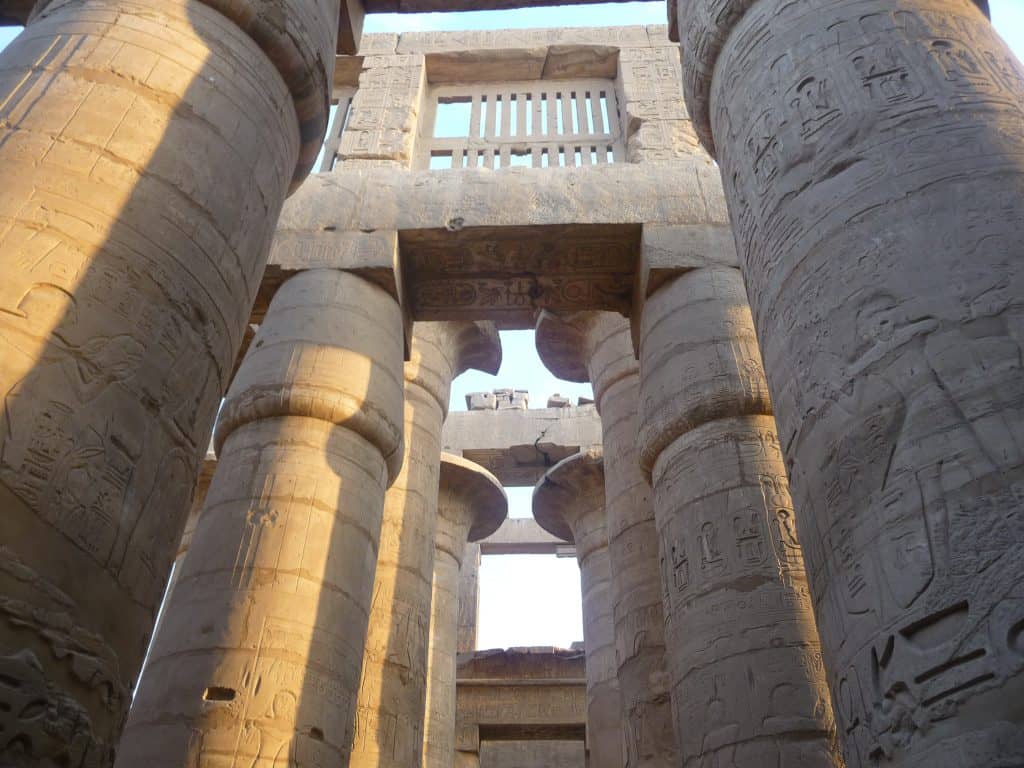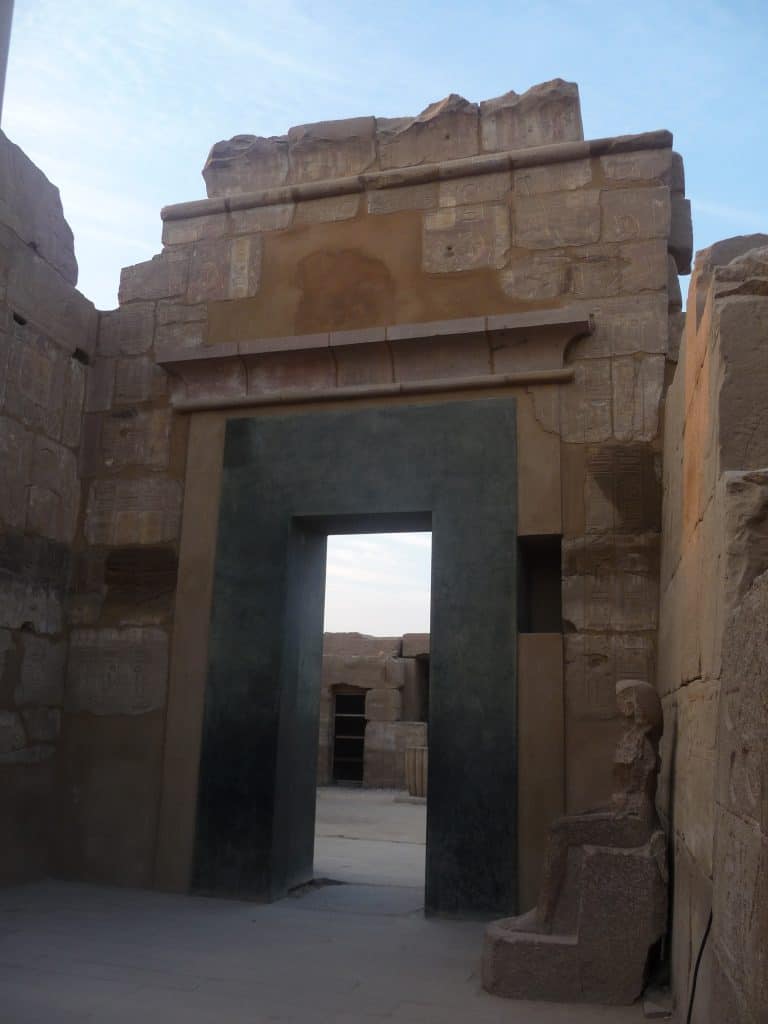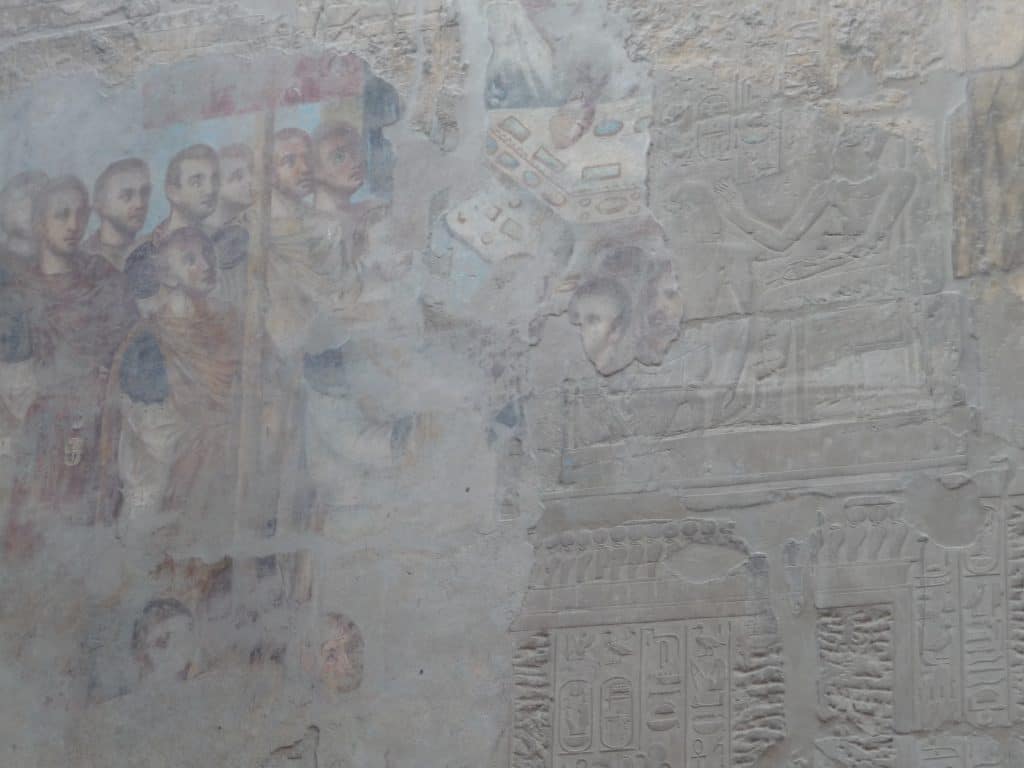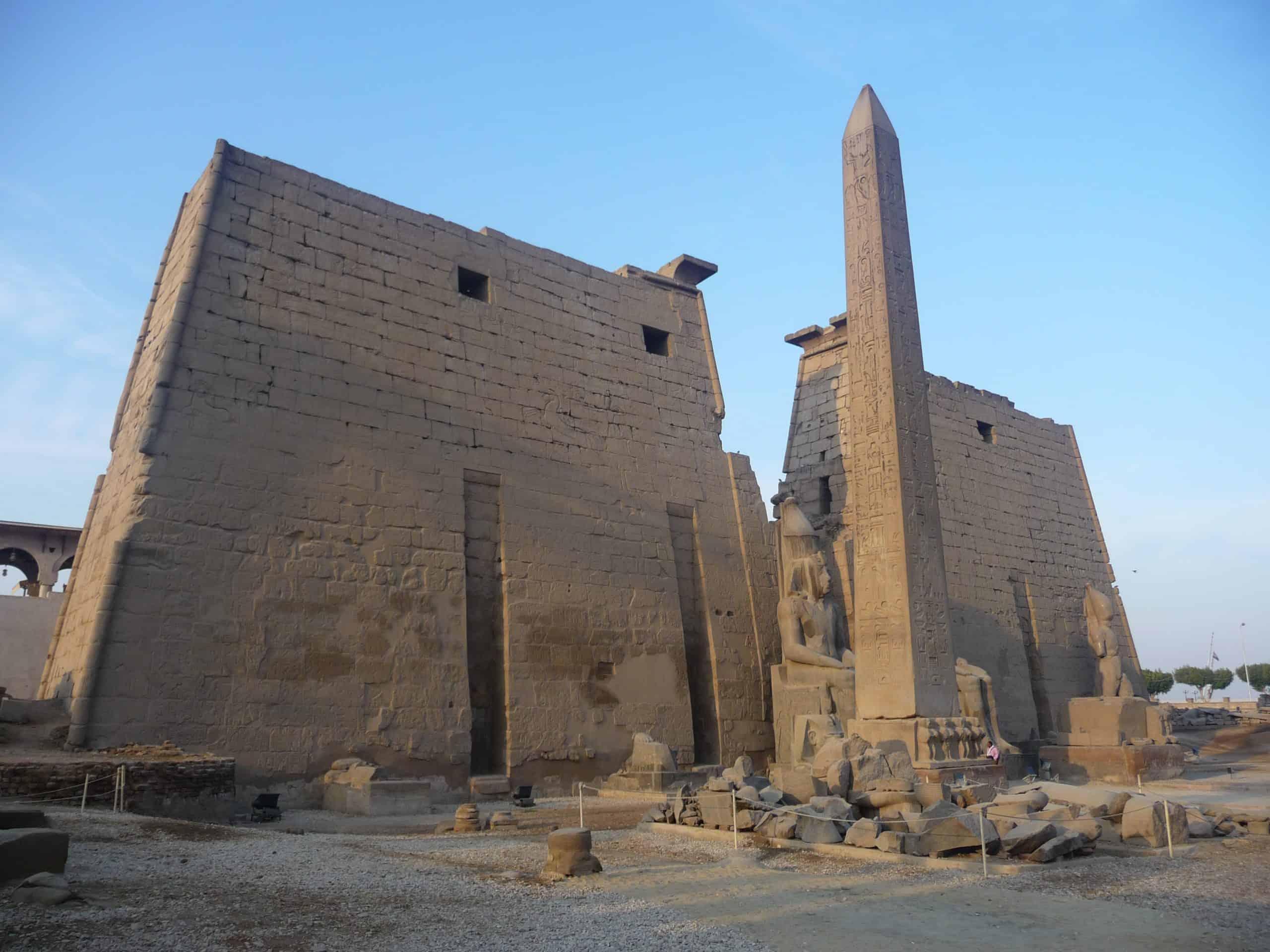
Karnak Temple is the largest temple in the world and occupies an area of about 300,000 square meters.
Street of the sphinxes, which bears this name for the presence of 40 mythological figures with the head of a ram, placed to protect the Temple, extends to the first door of the temple, built at the time of King Nektanebo I.
The door leads to a large courtyard, of about 800 square meters, built during the XXII Dynasty.
The second door of the Temple was built during the XVIII Dynasty but unfortunately today it is heavily damaged and leads to the Great Hypostyle Hall which contains 134 columns 22 meters high.
Great Temple of Amun and the Temple of Luxor constitute only a part of the Temple complex of Karnak, which was built hand in hand with the evolution of ancient Egyptian history, presenting an overlap of structures almost impossible to identify individually.
According to what the Egyptians believed, divine perfection consisted of a triad, represented in the Temple by Pharaoh Amun, his wife Mut and his son Khonsu. The Templar enclosure of the Goddess Mut is connected to that of Amun by the avenue of the sphinxes.
The “Great Porticoed Courtyard” houses the temple-deposit of Ramses III and was the shelter of the boats sacred to the God Amun. Nearby is the monumental entrance called Bubasti Vestibule. Near the lake sacred to Amun there is still the giant statue of Khepri, the sacred beetle representing the rising Sun.
The construction of the Luxor Temple began during the reign of Amenhotep III in the fourteenth century a.C. 100 years later, Ramses II took care of the expansion of the temple giving it its present appearance. Ramses II had added, in front of the existing structure, a porticoed courtyard, supported by 72 columns and a large tower that frames the large entrance door to the Temple. On the walls of the portal are represented some scenes that narrate the battle of Qadesh, but what most characterizes the Temple were the six statues of Ramses II, of colossal size.
At one time in addition to the statues there were two obelisks, one still stands in its original position, while the other is located in the Place de la Concorde in Paris.
In later times the Temple was subject to restoration by Alexander the Great and Emperor Tiberius. During the period of Arab domination the Temple was abandoned.
The western corner of the courtyard includes a reliquary that housed the sacred ships of the gods used in the celebrations of the Opet Festival.The Feast of Opet was a sacred anniversary dedicated to Amun, during which the statues came out of the Karnak Temple and were carried in procession in the South.

